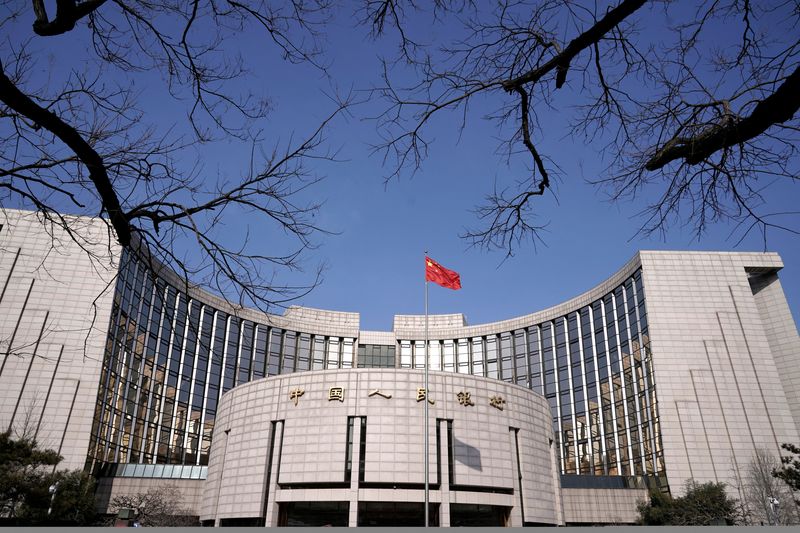Stock Markets
China lifts policy bank loans, raising housing support expectations


© Reuters. FILE PHOTO: The headquarters of the People’s Bank of China, the central bank, is pictured in Beijing, China, as the country is hit by an outbreak of the new coronavirus, February 3, 2020. REUTERS/Jason Lee/File Photo
BEIJING (Reuters) -China’s central bank made 350 billion yuan ($49.1 billion) in loans to policy banks through its pledged supplementary lending (PSL) facility in December, data showed, fuelling expectations of increased support for the country’s ailing housing sector.
The People’s Bank of China, which released the data in a statement on Tuesday, did not say how China Development Bank, Export-Import Bank of China and Agricultural Development Bank of China would use the loans.
The data shows the first monthly increase in PSL loans since November 2022. The PBOC granted 630 billion yuan in such loans between September and November 2022 to support the Chinese economy during the COVID-19 pandemic.
“The increase in PSL loans indicates that the quasi-fiscal policy is gradually gaining strength, and specific areas may be related to infrastructure construction, affordable housing construction, etc,” said Ma Hong, senior analyst at Zhixin Investment Research Institute.
Beijing plans to provide at least 1 trillion yuan of low-cost financing to China’s urban village redevelopment and affordable housing programmes to shore up its struggling property market, Bloomberg News reported in November.
Outstanding PSL loans were at 3.252 trillion yuan at the end of December, compared with 2.902 trillion yuan at the end of November, PBOC said.
The PSL programme, initiated in 2014, was originally designed to help support any property downturn by funding urban redevelopment, pushing up property prices in the process.
China relied heavily on PSL loans to support its shanty-town renovation during 2015-2018.
($1 = 7.1348 )
Stock Markets
Suburban Propane director Logan sells $139k in shares
Stock Markets
Stock market today: S&P 500 closes lower, but posts big weekly win
Stock Markets
TD Bank promotes Laura Nitti to retail market president role

 Forex3 years ago
Forex3 years agoForex Today: the dollar is gaining strength amid gloomy sentiment at the start of the Fed’s week

 Forex3 years ago
Forex3 years agoUnbiased review of Pocket Option broker

 Forex3 years ago
Forex3 years agoDollar to pound sterling exchange rate today: Pound plummeted to its lowest since 1985

 Forex3 years ago
Forex3 years agoHow is the Australian dollar doing today?

 Cryptocurrency3 years ago
Cryptocurrency3 years agoWhat happened in the crypto market – current events today

 World3 years ago
World3 years agoWhy are modern video games an art form?

 Commodities3 years ago
Commodities3 years agoCopper continues to fall in price on expectations of lower demand in China

 Economy3 years ago
Economy3 years agoCrude oil tankers double in price due to EU anti-Russian sanctions





















